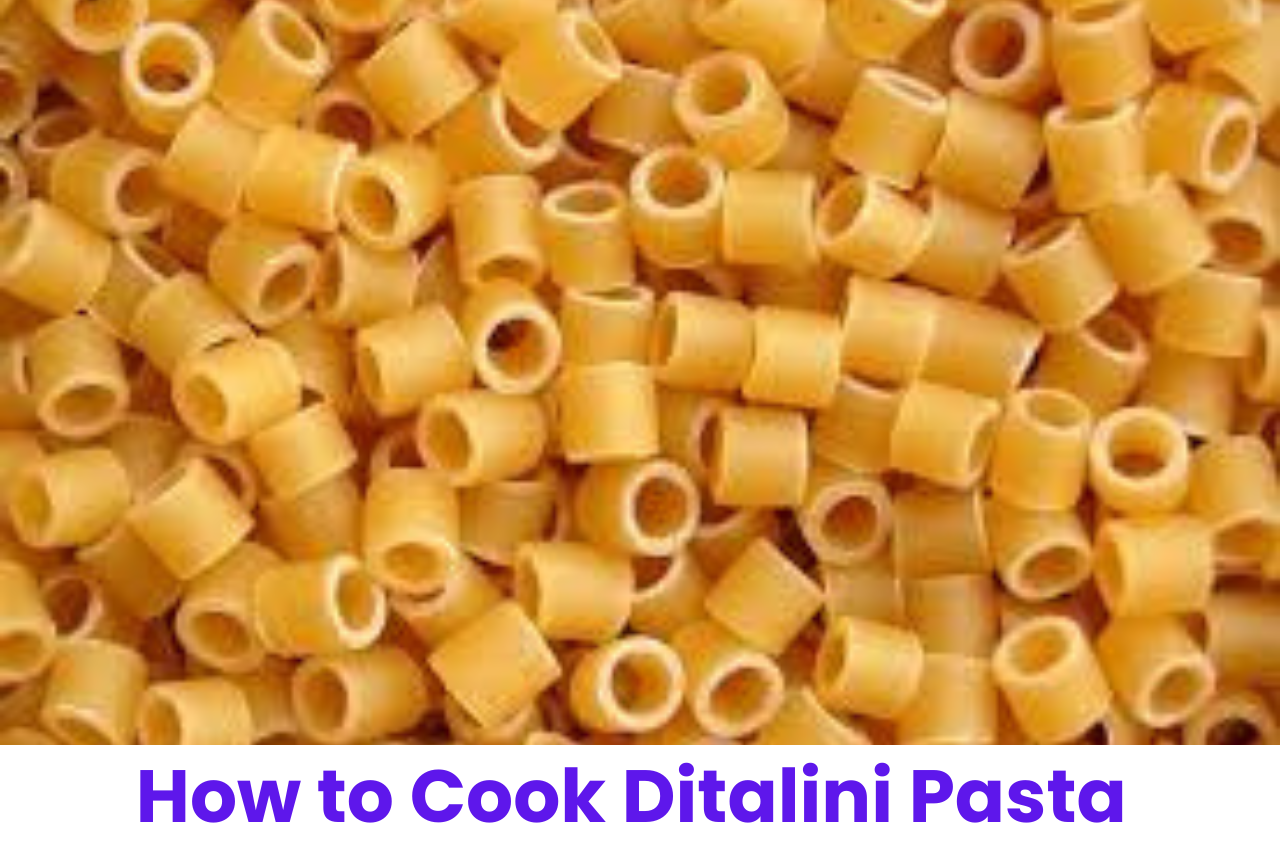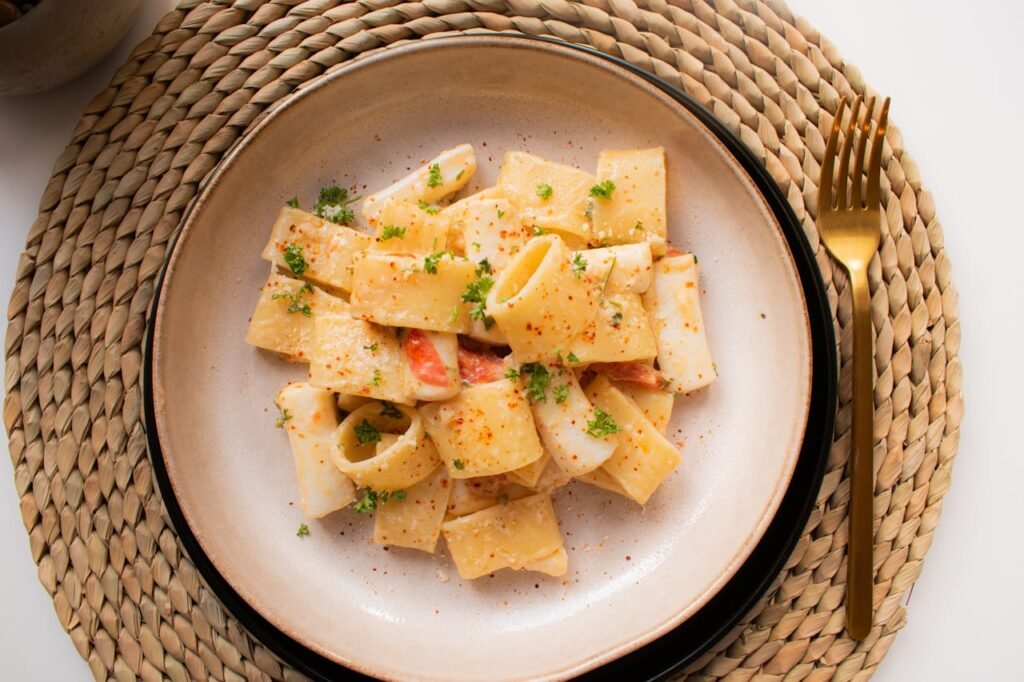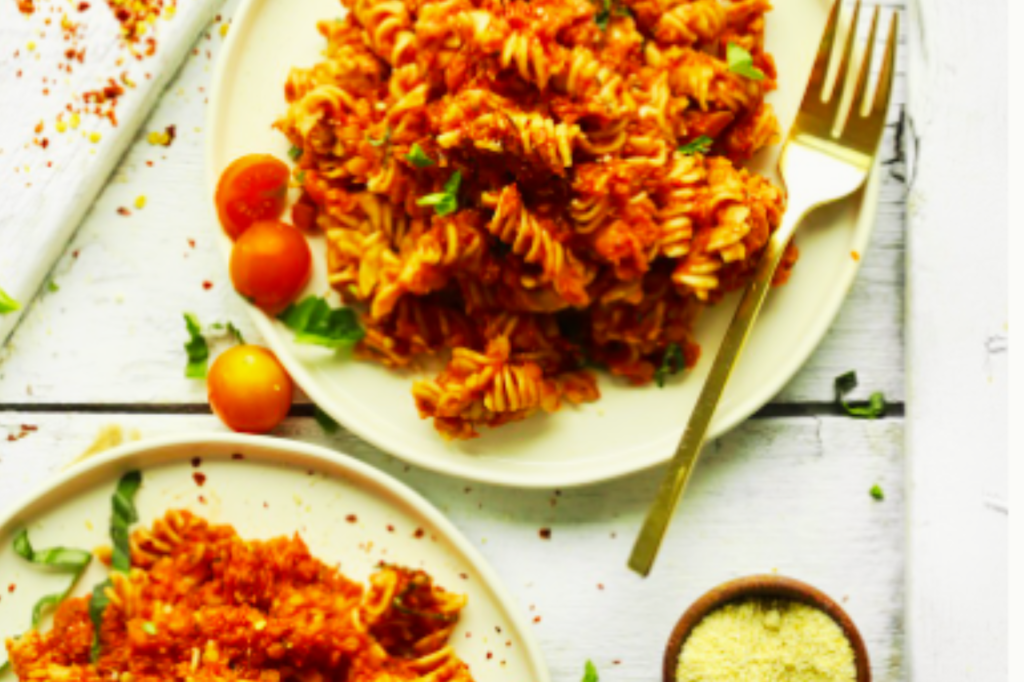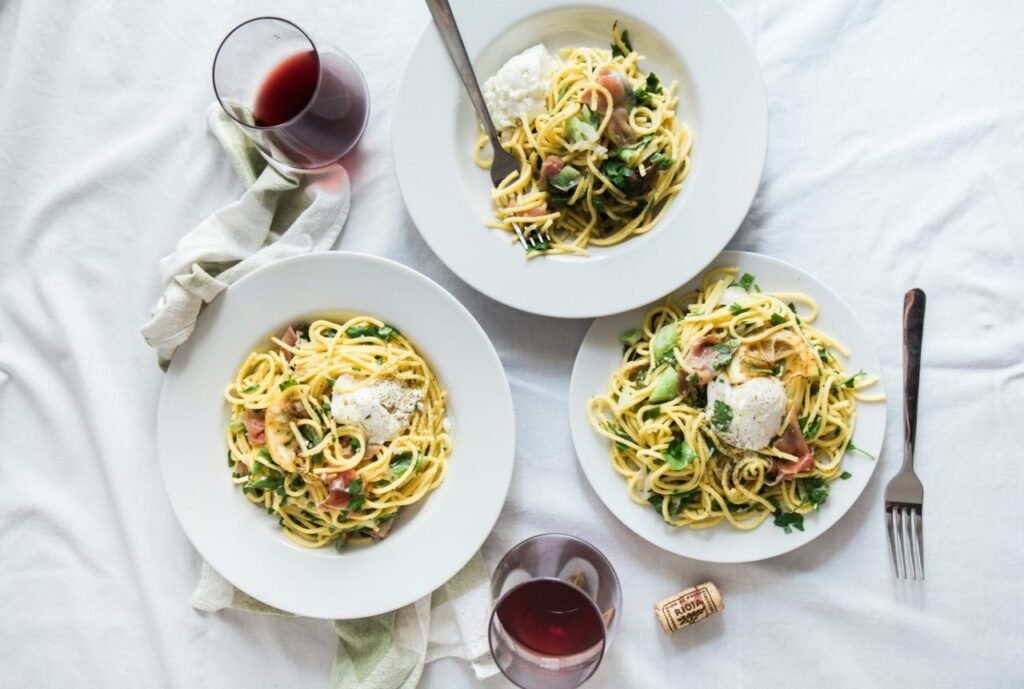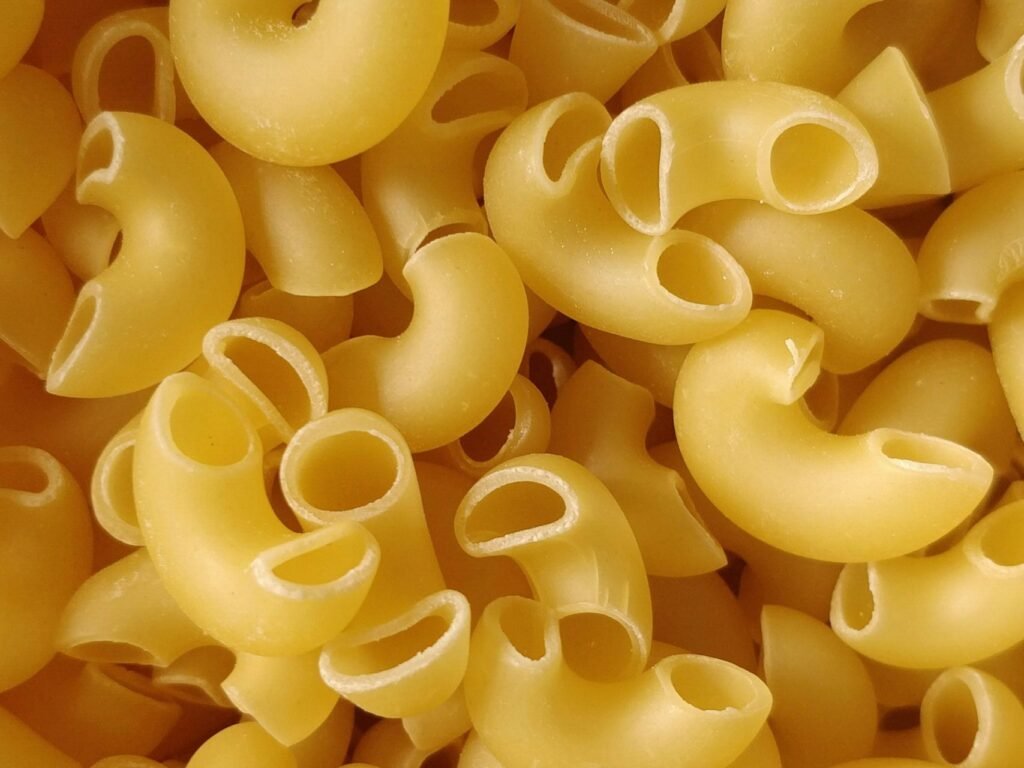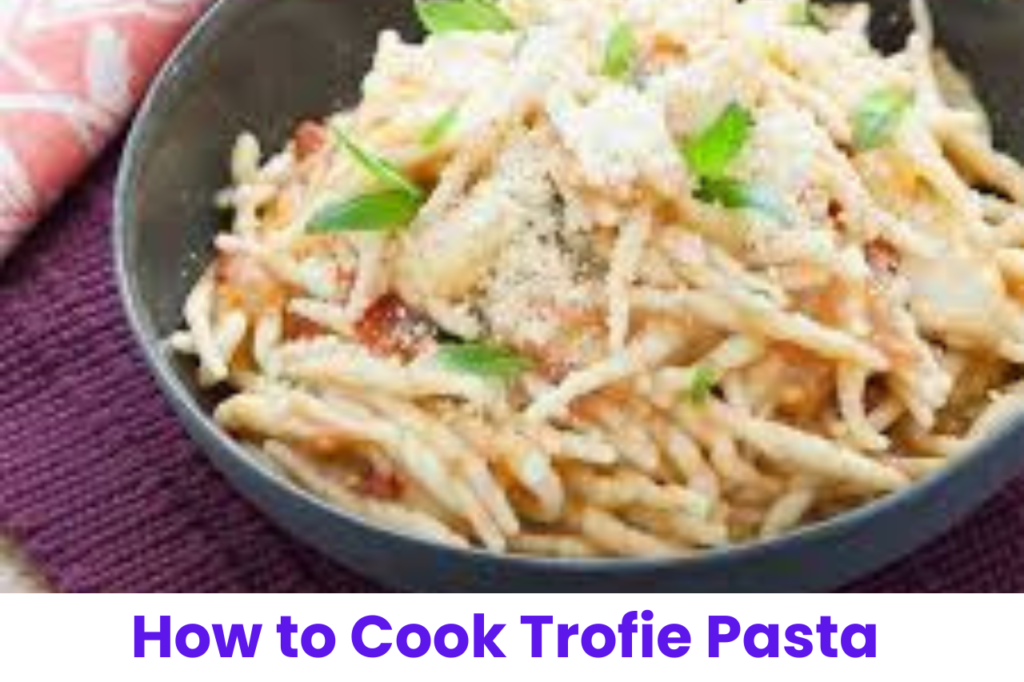Ditalini pasta, a beloved staple in Italian cuisine, is renowned for its small tube shape and versatility in various dishes. Originating from the Campania region of Italy, ditalini is a versatile pasta that holds a special place in Southern Italian cooking. What sets ditalini apart is its miniature tube shape, resembling tiny thimbles, which makes it perfect for soups, salads, and pasta dishes. Its minor size permits it to be handily integrated into a spoonful of soup or salad, adding surface and substance to each chomp. In this detailed guide I will explain to you how to cook Ditalini Pasta.
In this comprehensive guide, we will delve into the art of cooking ditalini pasta, exploring the key steps to achieve perfect al dente pasta every time. Whether you’re a seasoned chef or a novice in the kitchen, mastering ditalini pasta will elevate your culinary repertoire. Join us as we uncover the secrets of cooking and serving ditalini pasta, from understanding its characteristics to exploring creative recipes that showcase its versatility. Let’s embark on a journey to discover the delights of ditalini pasta and elevate your cooking skills.
Understanding Ditalini Pasta: Characteristics and Uses
Characteristics of Ditalini Pasta:
Ditalini pasta, otherwise called “little thimbles,” is described by its little, tube-molded structure. This pasta is moderately short, estimating around 1/4 to 1/2 inch long. It has a smooth surface texture, making it ideal for holding onto sauces and soup broths.
The name “ditalini” is derived from the Italian word “ditale,” which means thimble, reflecting the pasta’s resemblance to tiny sewing thimbles. In Italy, ditalini comes in two varieties: rigate, with a ridged exterior, and lisci, which has a smooth surface. However, the smooth lisci variety is more common in the United States.
Common Uses of Ditalini Pasta:
Ditalini pasta is exceptionally flexible and generally utilized in different dishes, particularly in Italian food. Its small size and firm texture make it suitable for:
- Soups: Ditalini is a popular choice for soups like Pasta e Fagioli (pasta and beans), minestrone, and other hearty vegetable soups. The tiny tubes absorb the flavors of the broth and add a delightful texture to each spoonful.
- Salads: Ditalini is often incorporated into pasta salads, adding substance and texture. Its small size blends well with other ingredients like vegetables, cheese, and dressing.
- Pasta Dishes: Ditalini can be used in traditional pasta dishes, especially those with rich sauces or chunky ingredients. It pairs well with creamy sauces, meat-based ragus, and tomato-based sauces.
- Casseroles: Ditalini can be included in baked pasta dishes or casseroles, adding a delightful bite and texture to the final dish.
Understanding the characteristics and uses of ditalini pasta will help you appreciate its versatility in various culinary preparations. Now, let’s delve into the step-by-step process of cooking ditalini pasta to achieve perfect results.
How to Cook Ditalini Pasta: Step-by-Step Guide
Cooking ditalini pasta to perfection requires attention to detail and proper technique to achieve the ideal texture and flavor. Follow these step-by-step instructions to cook ditalini pasta like a seasoned chef:
1. Boil Water with Salt:
Start by bringing a large pot of water to a rolling boil. Use about 4-6 quarts of water for every pound of ditalini pasta. Adding salt to the boiling water enhances the pasta’s flavor, so aim for approximately 1-2 tablespoons of salt per gallon of water.
2. Add Ditalini Pasta:
Once the water reaches a vigorous boil, add the ditalini pasta to the pot. Stir gently to prevent the pasta from clumping together. Ensure that the water continues to boil throughout the cooking process.
3. Cook Until Al Dente:
Refer to the package instructions for the recommended cooking time. Generally, ditalini pasta cooks relatively quickly, usually in about 8-10 minutes. It’s crucial to taste the pasta frequently as it nears the end of the cooking time to ensure it reaches the desired texture, which should be tender yet firm to the bite (al dente).
4. Drain and Rinse:
Once the ditalini pasta is cooked to perfection, immediately drain it in a colander placed in the sink. Rinse the pasta briefly under cold running water to stop the cooking process and remove excess starch. This step helps prevent the pasta from becoming mushy and sticking together.
5. Use Immediately or Add to Dish:
The cooked ditalini pasta is now ready to be incorporated into your favorite recipes. You can add it directly to soups, sauces, or salads, depending on your culinary preferences.
Pro Tips for Cooking Ditalini Pasta:
- Use Ample Water: Ensure there’s enough water in the pot to allow the pasta to move freely during cooking. This prevents sticking and ensures even cooking.
- Salt the Water: Don’t skip salting the pasta water. It flavors the pasta from within as it absorbs the water.
- Check Al Dente Texture: Taste the pasta a minute or two before the recommended cooking time ends. Pasta should be tender but still slightly firm in the center.
- Avoid Overcooking: Be vigilant with timing to avoid overcooking ditalini pasta, which can lead to a mushy texture.
By following these detailed steps, you’ll master the art of cooking ditalini pasta to perfection. Whether you’re making a comforting soup, vibrant pasta salad, or classic Italian dish, properly cooked ditalini pasta will elevate your culinary creations.
Creative Ditalini Pasta Recipes: Explore the Possibilities
Ditalini pasta’s small, tubular shape and delightful texture make it a versatile ingredient that can shine in a variety of dishes. Let’s delve into some creative and delicious recipes featuring ditalini pasta:
1. Pasta e Ceci (Pasta and Chickpeas):
This classic Italian dish combines ditalini pasta with creamy chickpeas in a savory broth, creating a hearty and satisfying meal. Start by sautéing garlic and rosemary in olive oil, then add cooked chickpeas and ditalini pasta. Simmer until the flavors meld together, and serve garnished with fresh parsley and a drizzle of extra virgin olive oil.
2. Pasta e Fagioli (Pasta and Beans):
Pasta e Fagioli is a rustic Italian soup featuring ditalini pasta and tender cannellini beans in a flavorful tomato base. Sauté onions, carrots, and celery in olive oil, then add crushed tomatoes, cooked beans, and ditalini pasta. Let simmer until the pasta is al dente, and finish with a sprinkle of grated Parmesan cheese.
3. Minestrone Soup:
Ditalini pasta is a perfect addition to minestrone, a hearty vegetable soup beloved in Italian cuisine. Combine seasonal vegetables like carrots, zucchini, and spinach with cooked ditalini pasta in a savory broth. Garnish with fresh basil and a drizzle of olive oil for a comforting bowl of goodness.
4. Creamy Chicken Ditalini Soup:
For a luxurious twist, try creamy chicken ditalini soup. Cook shredded chicken in a creamy broth with vegetables like carrots and peas, then add cooked ditalini pasta. Season with thyme, parsley, and a touch of lemon juice for brightness.
5. Italian Meatball Soup:
Simmer homemade meatballs in a savory tomato broth along with ditalini pasta for a flavorful Italian meatball soup. Finish with fresh herbs like basil and a generous sprinkle of grated Parmesan cheese.
6. Baked Meatballs with Ditalini:
Combine baked meatballs with cooked ditalini pasta and tomato sauce in a baking dish. Top with mozzarella cheese and bake until bubbly and golden for a comforting and satisfying meal.
7. Ditalini Risottata:
For a unique twist, prepare a ditalini “risottata” by cooking the pasta in vegetable broth until creamy and tender. Add tomato paste for color and depth of flavor, then garnish with red pepper flakes and crumbled feta cheese.
8. Coleslaw Ditalini Pasta Salad:
Mix ditalini pasta with crunchy coleslaw ingredients like cabbage, celery, and bell peppers. Toss with a creamy dressing made with mayonnaise, sour cream, Dijon mustard, and cider vinegar for a refreshing pasta salad.
9. Italian Chopped Salad with Ditalini:
Create a hearty chopped salad with diced salami, provolone cheese, cherry tomatoes, and cooked ditalini pasta. Toss with Italian dressing and serve as a main dish or side salad.
10. Chicken Macaroni Salad:
Prepare a light and creamy chicken macaroni salad by combining diced chicken, vegetables, and ditalini pasta with a dressing made from mayonnaise, mustard, and herbs. Perfect for picnics and potlucks!
These creative ditalini pasta recipes offer a delicious way to incorporate this versatile pasta into your cooking repertoire. Experiment with different flavors and ingredients to discover your favorite ditalini dish!
Nutritional Benefits of Ditalini Pasta
Ditalini pasta not only adds a delightful texture to dishes but also offers several nutritional benefits. Let’s explore why ditalini can be a healthy choice when incorporated into a balanced diet:
1. Energy Source:
Ditalini pasta, like other pasta varieties, is primarily made from semolina flour, which is a good source of carbohydrates. Carbohydrates are the body’s primary source of energy, providing fuel for daily activities and exercise.
2. Low Glycemic Index:
Despite being a carbohydrate-rich food, ditalini pasta has a low glycemic index (GI). This means it has a slower impact on blood sugar levels compared to high-GI foods. The low GI of ditalini pasta helps in keeping you fuller for longer periods, promoting sustained energy levels.
3. Enriched with Iron and B Vitamins:
Many pasta products, including ditalini, are enriched with essential nutrients like iron and B vitamins (such as niacin, thiamine, riboflavin, and folic acid). Iron is crucial for oxygen transport in the body, while B vitamins play various roles in metabolism and energy production.
4. Suitable for Dietary Restrictions:
Ditalini pasta is a versatile option suitable for various dietary preferences and restrictions. It is vegan, vegetarian, egg-free, and fish-free, making it inclusive for a wide range of diets.
Nutritional Profile of Ditalini Pasta (Per 1 Cup, Cooked):
- Calories: Approximately 200 calories
- Carbohydrates: Around 40 grams
- Protein: Approximately 7 grams
- Fat: Minimal amount
- Dietary Fiber: Roughly 2 grams
- Iron: Provides a good source of iron, contributing to daily requirements
- B Vitamins: Contains essential B vitamins, supporting overall health
Incorporating Ditalini Pasta into a Balanced Diet:
Ditalini pasta can be part of a balanced diet when consumed in moderation and paired with nutrient-rich ingredients. Here are some tips for incorporating ditalini into your meals:
- Combine with Vegetables: Create pasta salads or add ditalini to soups loaded with vegetables for added fiber, vitamins, and minerals.
- Include Lean Proteins: Pair ditalini with lean proteins like chicken, turkey, beans, or fish to enhance the nutritional value of your meal.
- Use Healthy Fats: Dress ditalini pasta with olive oil-based sauces or incorporate nuts and seeds for healthy fats and added flavor.
- Opt for Whole Grain Varieties: Choose whole grain ditalini pasta for added dietary fiber, which supports digestive health and provides sustained energy.
Final Thoughts: How to Cook Ditalini Pasta
Ditalini pasta can be a versatile and nutritious addition to your diet, offering energy-sustaining carbohydrates, essential nutrients like iron and B vitamins, and flexibility for various dietary preferences. When combined with a variety of nutrient-dense ingredients, ditalini pasta can contribute to a balanced and flavorful meal. Experiment with different recipes to discover creative ways to enjoy ditalini pasta while supporting your overall health and well-being.
Read More: How to Cook Pasta Sauce from a Jar
FAQs
Ditalini pasta typically boils for about 8 to 10 minutes to achieve an al dente texture—tender yet firm to the bite. Follow package instructions for precise cooking times.
To cook authentic pasta, use a large pot of generously salted boiling water. Add pasta and stir occasionally to prevent sticking. Cook until al dente, then drain and toss with your desired sauce.
Star-shaped pasta, such as stelline or pastina, usually cooks in about 5 to 7 minutes. Check the package instructions for specific cooking times based on the size and thickness of the pasta.
If you don’t have Ditalini pasta, you can substitute other small pasta shapes like tubettini, orzo, or small elbow macaroni. Adjust cooking times accordingly based on the pasta size and shape.

